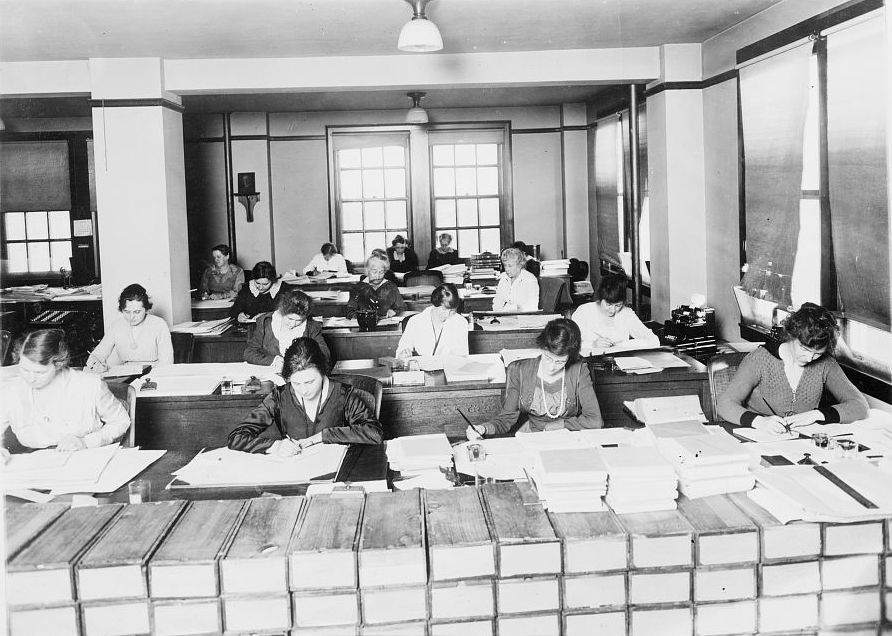Religion and the U.S. Census
“What is your religion?” If the U.S. Census Bureau included such a question in its decennial household survey, it would probably startle and unsettle many Americans. “None of your … business,” many might respond.
For a century, however, the Census Bureau collected a tremendous amount of information about religion in the United States. The Bureau’s efforts began with the 1850 decennial census, when it gathered data about number of churches by denomination, the value of their church edifices, and the number of individuals those churches could accommodate. The Bureau listed nineteen denominations (from “Baptist” to “Universalist”); it subsumed smaller groups into categories labeled “Free,” “Union,” and “Minor Sects.”
In the 1880 census, the Bureau expanded its efforts to gather information about churches. By way of correspondence with denominational officials, its officials collected statistics on worship attendance, Sunday schools, and other aspects of congregational activities, but the Bureau never tabulated and published its data. In 1890, the Bureau collected even more information, including the number of ministers in each denomination. In 1890, the Bureau collected information on 145 denominations, grouped into eighteen families, such as “Adventists” and “Baptists.”
In 1902, Congress passed an act to establish the Census Bureau as a permanent office, and it authorized the Bureau to undertake a decennial census of “religious bodies,” separate from and conducted at a different time than the decennial population surveys. The Bureau’s goal was for each individual congregation in the nation to fill out a schedule, answering questions about membership, seating capacity, debt, Sunday schools, clerical staff, and the value of church property. The Bureau obtained the names and addresses of individual congregations from denominational officers and conducted the census through correspondence. In some cases, including that of the Catholic Church and that of Jewish organizations, the Bureau asked denominational officers themselves to collect the data. In still other instances, the Bureau employed agents to canvas the churches of specific denominations, including the leading African American denominations. It is unclear why the Bureau thought this method of data collection was necessary or appropriate for these denominations. The Bureau published hefty volumes with the tabulations of these censuses, along with accounts of denomination histories and teachings secured from organizational officials.

Figure 1. U.S. Census Bureau employees, c. 1930. Courtesy of the Library of Congress.
The Bureau repeated its efforts in 1916, 1926, and 1936. The 1936 Religious Bodies census suffered, however, because some denominations made very incomplete returns. The Bureau thus counted more than thirty thousand fewer churches in 1936 than in 1926. The number of churches in the country had not actually declined. For instance, the Bureau estimated that roughly half of South Baptist congregations had not submitted a schedule. The Census Bureau began collecting and tabulating a 1946 Religious Bodies census, then shelved the project due to a lack of funding.
At the same time, some politicians, church leaders, and Bureau officials toyed with the idea of adding a question about individual religious affiliation to the 1950 decennial census. The idea was dropped but then revived in the mid-1950s in preparation for the 1960 census, partly because Bureau officials regarded religion as “one of the major underlying social factors in American life.” The Bureau director, Robert W. Burgess, encouraged public dialogue on the matter of a religion question.
The early Religious Bodies censuses had been largely uncontroversial. Jewish leaders expressed some wariness that robust counts of Jewish Americans would fuel antisemitism, but the American Jewish Committee spent its own money to help the Census Bureau undertake its work.
The decennial household survey was another matter. Participation in the household survey is mandatory. The ACLU objected to a mandatory question on religion, which led the Bureau to contemplate a voluntary question.
From the start of the debate, Catholic organizations were strongly in favor and Jewish organizations were strongly opposed. Why? According to historian Kevin Schultz, Catholic leaders “felt that the census data would provide demonstrable proof of the numerical power of Catholics in the United States.” By contrast, explains Schultz, Jewish leaders “argued that the question would violate the principle of separation of church and state and would yield dubious information that would only provide fodder for anti-Semites and other bigots.” For instance, the census would verify that American Jews had high levels of income and education. Jews also argued that the numbering of religious groups smacked of Nazism.
Jewish opposition, coupled with objections from the ACLU (which retracted its initial approval of a voluntary question), convinced Burgess to scuttle the planned religion question. Burgess wanted the religion question, but his primary duty was to ensure an accurate enumeration of the American population.
The scuttling of the proposed 1960 population census question about religion mostly ended the Bureau’s collection of data about religion. In 1976, when Congress amended the census law, it prohibited any mandatory questions about religious beliefs or membership. Today, the Bureau includes places of worship and other religious institutions in its County Business Patterns annual series, but it otherwise does not collect information about the nation’s religious institutions.
Sources:
Anne Farris Rosen, “A Brief History of Religion and the U.S. Census,” Pew Research Center (2008).
Kevin M. Schultz, “Religion as Identity in Postwar America: The Last Serious Attempt to Put a Question on Religion in the United States Census,” Journal of American History 93 (2006): 359–384, https://doi.org/10.2307/4486234.
